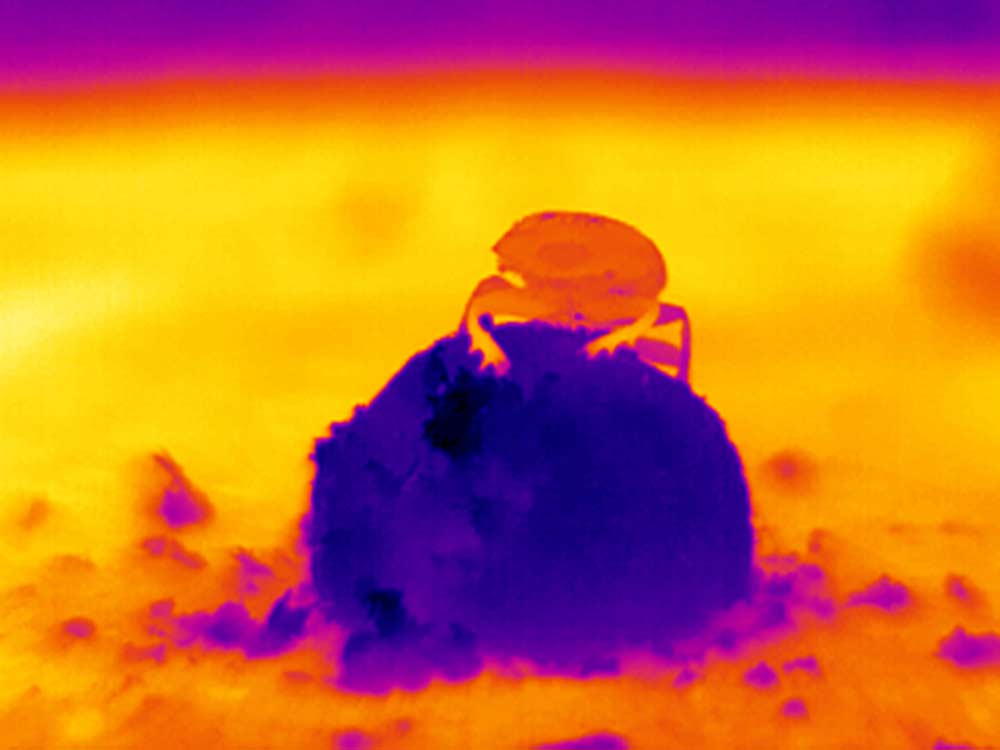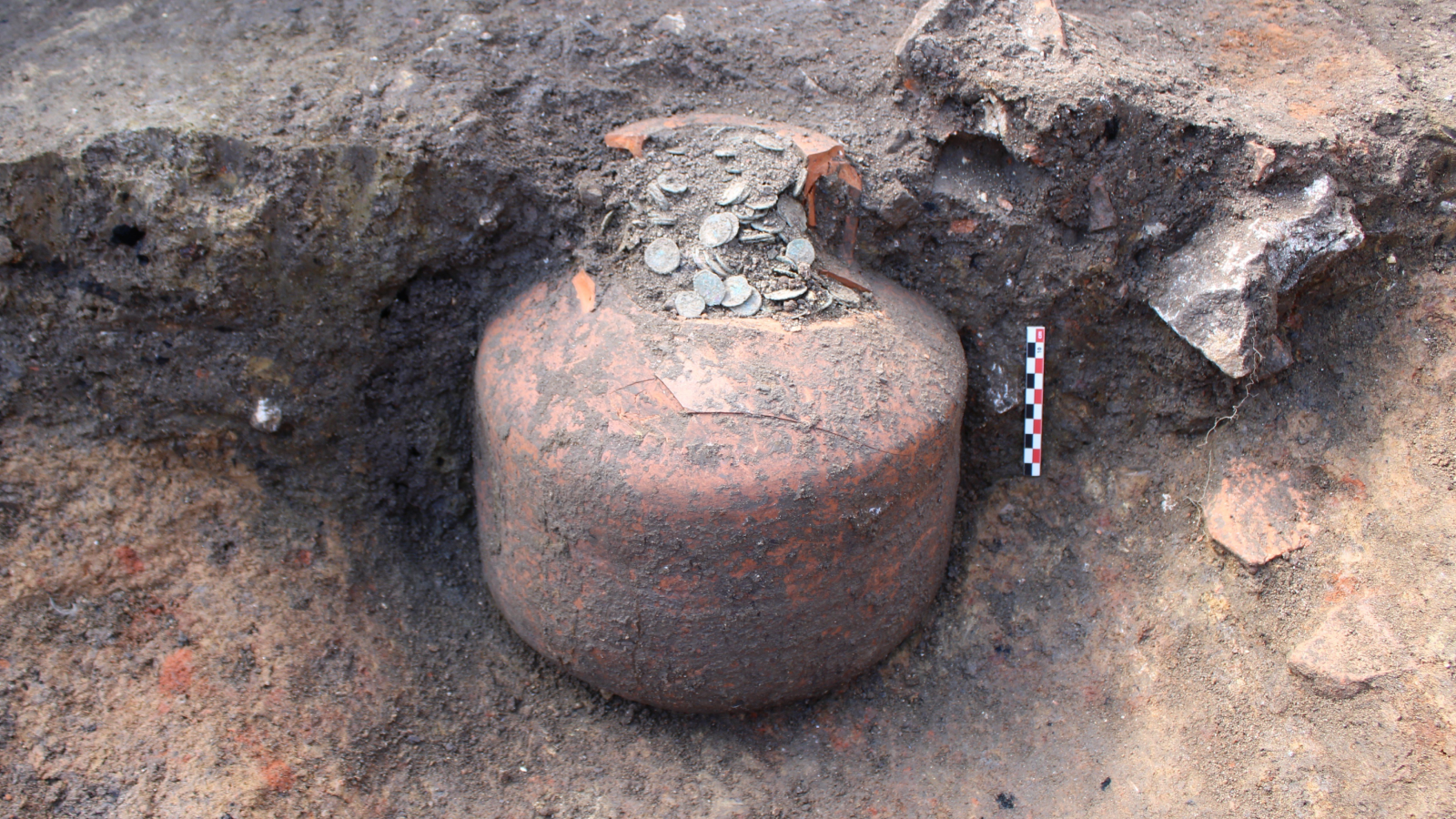That's Hot! Beetles Dance on Poop Balls to Keep Cool

Dung beetles can use balls of poo much like air-conditioning units to cool themselves, researchers say.
Dung beetles roll up nutritious balls of excrement up to 50 times heavier than their own bodies to feed their young. They roll the balls walking backward, with their heads near the ground. The ancient Egyptians envisioned that the sun was rolled around the sky in much the same way, making the dung (or scarab) beetle an important symbol in ancient Egyptian religion.
Past research showed these insects routinely dance in circles on top of their feasts of dung to help navigate away from rival beetles as quickly as possible. As scientists looked for this dancing, they noticed the beetles climbed onto the excrement balls most often during the midday heat.
Now researchers find that dung beetles might also use excrement to keep themselves cool.
"Dung beetles are the first example of an insect using a mobile, thermal refuge to move across hot soil," researcher Jochen Smolka, a neuroethologist at Lund University in Sweden, told LiveScience. "Insects, once thought to be at the mercy of environmental temperatures, use sophisticated behavioral strategies to regulate their body temperature[s]."
Scientists used thermal vision cameras to watch the Scarabaeus (Kheper) lamarcki dung beetle in its natural habitat in the South African savanna, where ground temperatures at noon can exceed a searing 140 degrees F (60 degrees C). The scientists prepared two sandy, circular arenas 10 feet wide (3 meters). They kept one shaded in the morning so that it only reached a relatively cool 124.3 degrees F (51.3 degrees C), and left the other exposed to full sunlight so it heated up to about 135 degrees F (57.2 degrees C).
"Like an air-conditioning unit, the moist ball is cooled by evaporative cooling," Smolka said.
Get the world’s most fascinating discoveries delivered straight to your inbox.
Once on top of the balls, the insects were often seen "wiping their faces," preening gestures the investigators think spread regurgitated liquid onto their legs and heads, behavior never seen at other times of day.
"We'd really like to continue looking at the preening behavior," Smolka said. "Do the beetles actually regurgitate liquid in order to cool their heads?"
The scientists detailed their findings in the Oct. 23 issue of the journal Current Biology.
Follow LiveScience on Twitter @livescience. We're also on Facebook & Google+.



